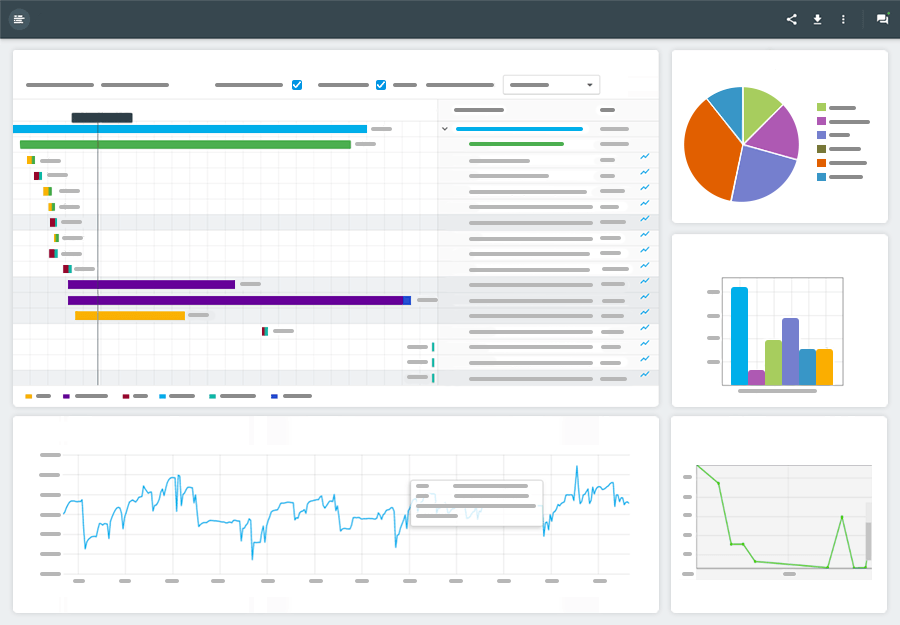
Accessing a website should be easy, but that’s not always the case when a mobile website is lagging. There are so many requests that are being taken across the globe to provide you with the information and images you need.
Often, website performance is only focused on desktop optimization, with mobile webpages being an afterthought (especially with the popularity of responsive design). It is important to note, however, that mobile devices typically have slower processors, less RAM, and less bandwidth via cell networks as compared to a desktop or laptop computer with a hardwired ethernet connection or strong WiFi signal. As webmasters, focus on developing for both desktop and mobile User Experience, with web performance optimization at the top of your QA checklist.
Here are five common reasons why your website is loading slowly on mobile devices.
1. Server Performance
Your website operates similarly to a vehicle. Whenever a user clicks on your website, they’re turning the key for the engine to start. This sends information to your server so it can load. If the service’s performance is lacking, then it’ll take longer to load. A slow server is never a good sign.
It’s also an indication that something is wrong with your web host. Sometimes an online website speed tool can help you determine the cause of the problem. A poor-quality web host will provide you with a shared server, which means you’re sharing space and resources with other users. If your website is loading slowly, then it’s because you’re in a long line of other sites that are constantly loading.
2. Unoptimized Images
The most common reason for a website that lags is because of its unoptimized images. Every photo and image is loaded in bits, which can take time if those images are large. The best solution to this problem is to use images that have quick and easy load times. You can shrink these images down to size without loss of picture quality. Reducing the size of your images can increase your website speed and performance.
User-generated content sites like Find My Electric and Autotrader can have massive amounts of used car images uploaded daily. Webpages such as the Find My Electric used Tesla Model Y page can sometimes receive hundreds of listings per week, with high-resolution Tesla images being uploaded to the web server constantly. These images are then resized, compressed, and rendered at different sizes throughout the website to optimize load times and keep performance a key metric of the User Experience — something Tesla enthusiasts have certainly become accustomed to. If the big used car websites can optimize thousands of high-resolution images — so can you!
3. Server Location
It’s not just the server’s performance that is lacking. It’s the location of it as well. Whenever a user is clicking on your website, they’re asking the server to load. The data that’s being sent to the server is often transmitted over cables and satellites. It can take time to get there.
This is especially the case if your server is based in America and some of your visitors are overseas. Whenever an international visitor clicks on your website, the information could take some time to get to them. It has to be transmitted to the server. Then it needs to travel across the ocean and back to their device. While data has gotten faster, it’s still not fast enough.
4. Too Many Plugins
Another factor for a website that lags is caused by too many plugins or extensions that you used to create your website. Most websites rely on the use of extensions and plugins to improve its function and provide the features that you need. However, installing too many plugins can significantly slow down your website and create a poor user experience. Removing unnecessary extensions and plugins from your website can greatly improve its speed and performance.
5. Too Much Traffic
If you’re experiencing an uptick in traffic, it could cause your mobile website lagging for the larger amount of users. Your server can only handle a certain amount of people at once. The more people who enter your website, the longer it’ll take for them to get the information they need. Your server will work harder to handle this extra traffic, but it’ll slow down the frontend and backend.
As you can see, website speed can be dependent on a wide variety of factors such as images, server performance and location, and an increase in traffic. It’s a problem that can be difficult to determine which factor is causing your mobile website to lag. No matter what the problem is, you need to keep everything in mind to locate the root of the problem.
If left uncorrected, a mobile website lagging can decrease the user experience. Thankfully, there are some quick fixes you can take to get your website up and running again.


